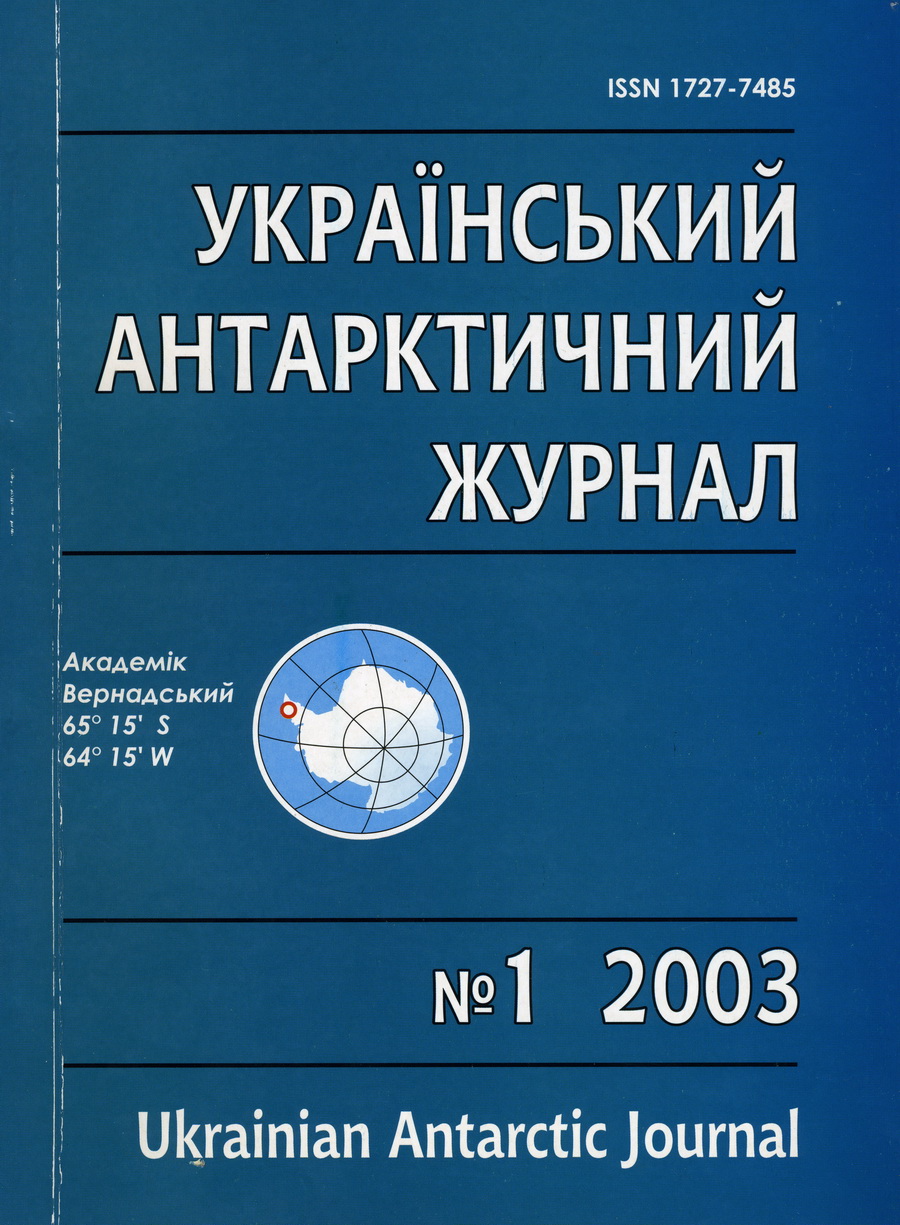- radio waves,
- sea surface,
- wave scattering,
- gravity waves,
- spectra
Abstract
The paper presents measurement techniques and results of studying HF radio signals from broadcasting stations that are reflected from the ionosphere and scattered by a rough sea surface. The experiments were carried out during the 7th Ukrainian Antarctic expedition on board the research vessel “Horizont”. The paper considers the theoretical first-order perturbation spectrum of electromagnetic waves scattered by the sea surface. The case of a linear non directional vertical antenna placed near the surface illuminated by an incident field is discussed, with account of the finite conductivity of the sea water, small grazing angles of the scattered waves and currents on the sea surface. The experimental spectra are compared with simulated results. A qualitative agreement between theory and experiment has been found, and possible physical reasons for specific features of the signal spectrum are discussed. The feasibility of oceanographic measurements with the use of radiation from broadcasting radios has been confirmed.
References
- Bass, F.G., & Fuks, I.M. (1972). Rasseianie voln na statististicheski nerovnoi poverhnosti [Diffraction of waves on statistically uneven surface]. Moscow, Nauka. [In Russian]
- Galushko, V.G. (1984). Opredelenie velichiny gorizontal'nyh gradientov v ionosfere po izmereniam parametrov KV v okrestnostiah miortvoi zony [Determination of the horizontal gradients in the ionosphere by measuring SW parameters near the dead zone]. Izv. Vuzov. Radiofizika, 27(12), 1491-1496. [In Russian]
- Kascheev, S.B., Yampolski, Y.M., & Zalizovskii, A.V. (2000). Duhpozitsionnoie zondirovanie morsckoi povershnosti signalami korotkovolnovyh radioveschatel'nyh stantsii [Two-positional sounding of the sea surface by signals of teh showrtwave radiostations]. Radiofizika i radioastronomia, 6(1), 79-88. [In Russian]
- Monin, A.S., & Krasitskii, V.P. (1985). Iavlenia na poverhnosti okeana [The phenomena on the ocean surface]. Leningrad, Gidrometeoizdat. [In Russian]
- Fillips, O.M. (1980). Dinamika verhnego sloia okeana [The Dynamics of the upper ocean layer]. Moscow, Gidrometeoizdat. [In Russian]
- Beley, V.S., Galushko, V.G., & Yampolski, Y.M. (1995). Traveling ionosphere disturbances diagnostics using HF signal trajectory parameter variations. Radio Sci, 30(6), 1739-1752.
- Pierson, W.I., & Moskovitz, L. A proposed spectral form for fully developed wind seas based on the similarity method of S.A. Kitaigorodsii. J. Geophysics Res., 69(24), 5181-5190.
- Wu, J. (1969). Wind stress and surface roughness at air-sea interface. J. Geophys. Res., 74(2), 444-455.

